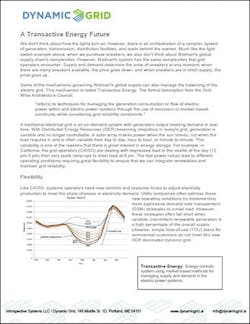We don’t think about how the lights turn on; however, there is an orchestration of a complex system of generation, transmission, distribution facilities, and loads behind the scenes. Much like the light switch example above, when we purchase sneakers, we also don’t think about Walmart’s global supply chain’s complexities. However, Walmart’s system has the same complexities that grid operators encounter. Supply and demand determine the price of sneakers at any moment; when there are many sneakers available, the price goes down, and when sneakers are in short supply, the price goes up.
Some of the mechanisms governing Walmart’s global supply can also manage the balancing of the electric grid. This mechanism is called Transactive Energy. The formal description from the Grid Wise Architecture Council;
“refer(s) to techniques for managing the generation consumption or flow of electric power within and electric power systems through the use of economic or market-based constructs while considering grid reliability constraints.”
A traditional electrical grid is an on-demand system with generators output meeting demand in real-time. With Distributed Energy Resources (DER) becoming ubiquitous in today’s grid, generation is variable and no longer controllable. A solar array makes power when the sun shines, not when the load requires it, and is often variable from day to day, hour to hour, or minute to minute. This variability is one of the reasons that there is great interest in energy storage. For example, in California, the grid operators (CAISO) are dealing with depressed load in the middle of the day (12 pm-3 pm) then very quick ramp-ups to meet load at 6 pm. The fast power ramps lead to different operating conditions requiring great flexibility to ensure that we can integrate renewables and maintain grid reliability
